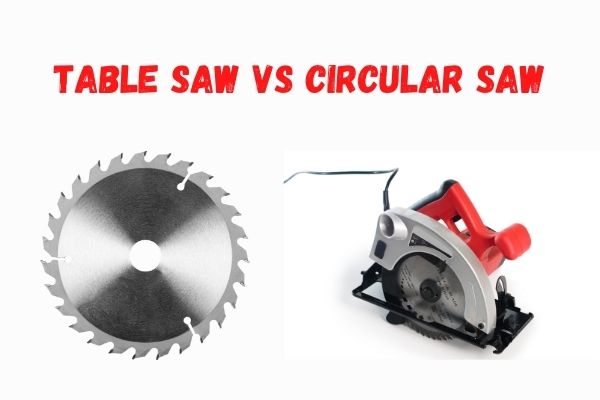When it comes to carpentry, there are several manual and power tools to choose from. It’s difficult for a beginner to decide which tool would be the best companion for his/her work. Don’t worry; I will help choose the most versatile saw for the types of cuts you need.
In this article, I am going to be comparing table saw vs circular saw. The goal of this article is to help a beginner choose the right saw.
Table saw vs circular: Functionality
If you’re just getting started in DIY or have been doing it for years, you should know that the best tool gives you the best results. Investing in a contractor table saw will surely enhance your working experience.
Circular saw
Let’s start with a circular saw first. A circular saw has a flat piece that guides your saw blades to cut something below the saw spinning.
The saw blade spun in a circular motion in both the table saw and circular saw, so there’s always going to be a fear of kickbacks.
The circular saw & table saw have guards attached for this reason. This guard automatically pulls away as the saw pushes into the material.
Usually, circular saws have a two-part switch. So you’ll have to touch like on the side switch and the trigger. This is a safety measure to protect yourself.
This saw can also cut in various ways because it’s totally uninhibited by rip fences or a flat surface. The flat surface is on the top so that you can lay this on top of anything, and it can cut.
Now the drawback of this saw is this is really only for straight cuts. You can’t angle your blade. You can’t get curves. However, with a circular saw, you have the freedom to cut short pieces or long ribs along the entire length of somethings. And this is also very easy to use & easy to set up.
You want to count for the curve, which is the thickness of the blade that’s going to be taken out of the material. So you measure from the edge of the blade to the edge of your plate, and you can actually set up a straight line with a straight edge clamp.

Table saw
Now onto the table saw. Though it might even be silly to you, even the smallest size table saw set up is gonna take a lot of space in your workshop. A table saw is also very versatile in its own way, but it tends to be more of an investment.
So there is a piece that is pushing your material up against parallel to the plate. This one is automatically parallel with the rip base, and you can do cross cuts, or you can do a 90 degree cut with this saw.
Now while you can cut larger material on this, you might be sort of limited on the table saw size and how large the rip fence comes out.
If you try to cut bigger pieces than your table dimensions, it’ll be unsupported and quite dangerous. So I would suggest you only have things using your rip base as a guide.
It doesn’t matter what brand you get, see if the blade is adjustable. Try to set your blade to the height of the workpiece. Your blade should just be slightly above the depth of the material that you’re cutting.
There is a guard attached to the table saw, but most of the people take it off, It just really gets in the way of utilizing stuff properly.
There is an on/off switch to operate the saw, so it’s very simple to use when it’s plugged in.
But the risk for a child to get near this and getting injured is relatively high. You can actually loosen your blade & just twist that cattle and get an angle cut at the table saw.
You can even change the Cutting angle up to 45 degrees and get long angular cuts.
Final words
I talked about the functionality of table saw vs circular saw. Both are different sizes and different price ranges.
If you’re just starting out in DIY, the must-have tool is a circular saw, because it is more versatile and available at an affordable price.
Now you might get much less precise cuts with a circular saw compared to table saws; however, if you measure twice cut once, you can get the best outcome.